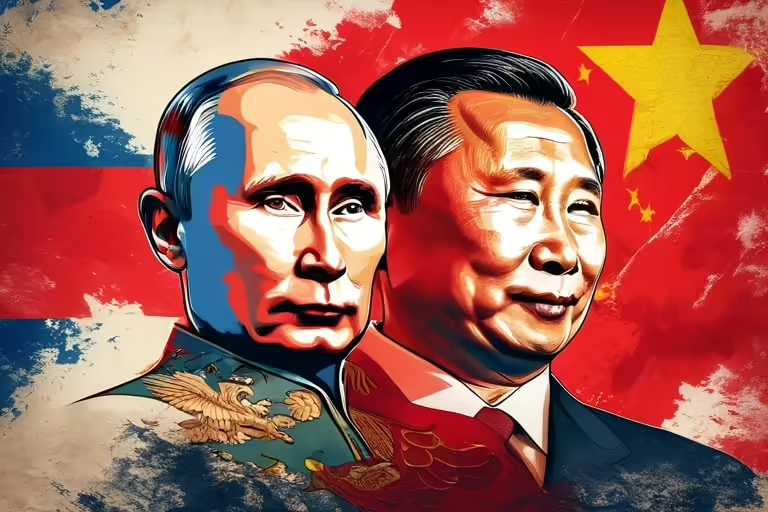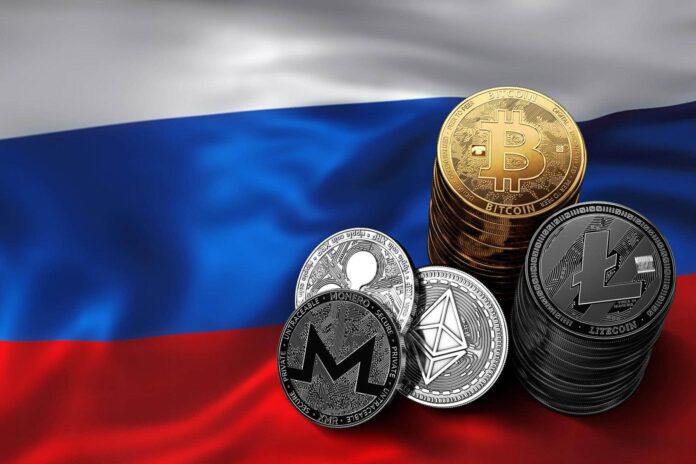Introduction As the global economic landscape continues to evolve, Russian commodities firms have found themselves facing a unique set of challenges when it comes to conducting financial transactions with their Chinese counterparts. In the wake of international sanctions and tightening compliance measures, these companies have been forced to explore alternative solutions to facilitate cross-border deals. One such solution that has gained significant traction is the use of stablecoins, particularly Tether’s USDT, to streamline the settlement process.
Stablecoins: A Lifeline for Russian Commodities Firms
The adoption of stablecoins by Russian commodities firms highlights the lasting impact of the international restrictions imposed in response to the conflict in Ukraine. Even in China, which has not joined the sanctions regime, financial transactions have become increasingly complex due to the threat of secondary sanctions from the U.S. Treasury Department. This has led Russian companies, particularly those in the metals and timber industries, to turn to the stability and efficiency of stablecoins to overcome these obstacles.
Bypassing Frozen Bank Accounts
One of the primary advantages of using stablecoins for Russian firms is the ability to avoid the risk of having their overseas bank accounts frozen. Many non-sanctioned companies have found themselves in a precarious situation, opening multiple accounts in different countries only to have them frozen one by one. By leveraging the blockchain-based nature of stablecoins, these firms can circumvent the traditional banking system, which has become increasingly vulnerable to sanctions.
Faster and More Cost-Effective Transactions
In addition to the security benefits, stablecoins also offer Russian companies a more efficient and cost-effective way to conduct cross-border transactions. According to Ivan Kozlov, co-founder of Resolv Labs, a digital currency expert, the transfer of stablecoins can be completed in as little as 5-15 seconds, with transaction costs of just a few cents. This stands in stark contrast to the slower and more expensive traditional banking methods, which have become increasingly burdensome for Russian firms.
Tether’s Dominance in the Russian Stablecoin Market
Among the various stablecoins available, Tether’s USDT has emerged as the preferred choice for Russian commodities firms. The fact that USDT is pegged to the U.S. dollar at a 1:1 ratio provides a sense of stability and security, which is particularly important in the current geopolitical climate. Additionally, Tether’s collaboration with global law enforcement agencies, including the U.S. Department of Justice, the FBI, and the U.S. Secret Service, has enhanced the token’s traceability and monitoring capabilities, making it a more appealing option for Russian firms.
The Shifting Regulatory Landscape in Russia

The growing adoption of stablecoins by Russian companies is not happening in a vacuum. The country’s regulatory landscape has also undergone a significant transformation, reflecting a shift in the Russian central bank’s approach to cryptocurrency.
From Blanket Ban to Cautious Experimentation
In the past, the Bank of Russia had considered a blanket ban on all cryptocurrencies. However, this stance has since evolved, with Governor Elvira Nabiullina expressing support for experimenting with cryptocurrency payments in international transactions. This policy change marks a significant milestone, as the central bank recognizes the potential utility of digital assets in facilitating cross-border trade.
Towards a Legal Framework for Stablecoin Use
Alongside the central bank’s shift in attitude, Russian lawmakers are also considering legislation to establish a legal framework for the use of stablecoins in international transactions. This move signals a formal acknowledgment of the role that cryptocurrencies can play in bypassing traditional financial barriers and enabling more seamless trade with global partners.
Expanding Crypto-Linked Banking Services
The increased cryptocurrency activity among Russians has also prompted the expansion of crypto-linked banking services within the country. Rosbank, for instance, began offering cross-border payments with cryptocurrency for businesses in June 2022, and other banks have since followed suit. This integration of digital assets into the Russian financial ecosystem further underscores the growing importance of stablecoins and other cryptocurrencies in the country’s economic landscape.
The Global Trend: Stablecoins in Sanctions-Affected Regions
The use of stablecoins for payments is not unique to Russian firms; it is a trend observed across various countries facing international sanctions. Venezuela, another nation under extensive economic restrictions, has also turned to Tether’s USDT to facilitate its oil and fuel exports, often through intermediaries based in Dubai.
Tether’s Expanding Role in Sanctions Evasion
The growing reliance on stablecoins, particularly Tether, in sanctions-affected regions has not gone unnoticed. A recent United Nations report highlighted the cryptocurrency’s popularity among cyber fraud and money laundering activities in Southeast Asia. Tether has refuted these claims, emphasizing its collaboration with law enforcement agencies and the traceability of its token.
Cryptocurrency’s Resilience in the Face of Sanctions
Despite the challenges posed by sanctions, the stablecoin sector has demonstrated its resilience and adaptability. Cryptocurrencies, with their decentralized nature and cross-border capabilities, have emerged as a viable alternative for countries and entities seeking to maintain financial stability and continue trading with global partners.
Barter Agreements: An Unconventional Solution
In addition to the adoption of stablecoins, some Russian commodities firms have also explored alternative transaction methods, such as barter agreements, to avoid cross-border financial transfers altogether. These deals involve the direct exchange of goods, effectively circumventing the need for traditional currency-based settlements.
Bypassing Financial Restrictions
By engaging in barter transactions, Russian companies can sidestep the challenges posed by sanctions and tightening compliance measures. This approach allows them to trade their commodities, such as metals and timber, for the goods and equipment they require, without the need for cross-border financial transactions.
Reviving an Ancient Practice
The resurgence of barter agreements among Russian firms is a testament to the ingenuity and adaptability of these companies in the face of economic adversity. This unconventional practice, once considered a relic of the past, has found new relevance in the current geopolitical landscape, where traditional financial channels have become increasingly constricted.
Navigating the Complexities of Global Trade
As the Russian-Ukrainian conflict continues to reverberate through the global economy, the commodities trade has emerged as a critical battleground. Russian firms, faced with mounting challenges, have had to navigate a complex web of sanctions, compliance measures, and financial restrictions to maintain their business operations.
The Resilience of Cryptocurrencies
The growing adoption of stablecoins, such as Tether’s USDT, by Russian companies highlights the resilience and adaptability of the cryptocurrency sector. These digital assets have proven to be a valuable tool in overcoming the barriers imposed by international sanctions, offering a secure, efficient, and cost-effective alternative to traditional banking systems.
Barter Agreements: A Blast from the Past
In addition to the stablecoin revolution, the resurgence of barter agreements among Russian commodities firms underscores the ingenuity and resourcefulness of these companies. By directly exchanging goods, they have found a way to bypass the financial restrictions that have hampered their ability to conduct cross-border transactions.
The Shifting Regulatory Landscape in Russia
The changing attitudes of the Russian central bank and lawmakers towards cryptocurrencies, including the consideration of a legal framework for stablecoin use, reflect the growing recognition of the role that digital assets can play in facilitating international trade. This shift in the regulatory landscape is likely to have far-reaching implications for the country’s economic landscape.
The Global Implications of Sanctions-Driven Innovation
The experiences of Russian and other sanctions-affected countries in leveraging stablecoins and barter agreements to maintain their trade relationships hold broader implications for the global economy. These innovative solutions highlight the adaptability and resilience of businesses in the face of economic adversity, and may inspire similar approaches in other regions facing similar challenges.
Conclusion
As the global economic landscape continues to evolve, the commodities trade has become a critical battleground, with Russian firms at the forefront of navigating the complexities of international sanctions and financial restrictions. The adoption of stablecoins, particularly Tether’s USDT, and the resurgence of barter agreements have emerged as innovative solutions for these companies, allowing them to maintain their business operations and trade with Chinese counterparts.
The shift in the Russian regulatory landscape, with the central bank and lawmakers recognizing the potential of cryptocurrencies in facilitating cross-border transactions, further underscores the growing importance of digital assets in the country’s economic ecosystem. This trend is not unique to Russia, as other sanctions-affected regions, such as Venezuela, have also turned to stablecoins to facilitate their trade activities.
The resilience and adaptability demonstrated by Russian commodities firms in the face of economic adversity hold broader implications for the global economy. These innovative solutions may inspire similar approaches in other regions facing similar challenges, ultimately shaping the future of international trade and financial transactions.
FAQs
1)What are the primary advantages of using stablecoins for Russian firms?
Stablecoins allow Russian firms to avoid frozen bank accounts, conduct faster and cost-effective transactions, and bypass traditional banking systems vulnerable to sanctions.
2)Why has Tether’s USDT emerged as the preferred choice for Russian commodities firms?
Tether’s USDT is pegged to the U.S. dollar at a 1:1 ratio, providing stability and security, and its collaboration with global law enforcement agencies enhances traceability and monitoring capabilities.
3)How has the regulatory landscape in Russia evolved regarding stablecoin use?
The Bank of Russia has shifted from considering a blanket ban on cryptocurrencies to supporting experimentation with cryptocurrency payments in international transactions, and lawmakers are considering legislation to establish a legal framework for stablecoin use.
4)What alternative transaction methods have Russian commodities firms explored?
In addition to stablecoins, some firms have explored barter agreements, involving the direct exchange of goods to avoid cross-border financial transfers altogether.
Table of Contents
Disclaimer: The information contained in this article is for informational purposes only. It should not be considered as financial or investment advice. The reader should do their own research before making any financial decisions based on the information provided above. Hash Herald is not responsible for any losses in market













